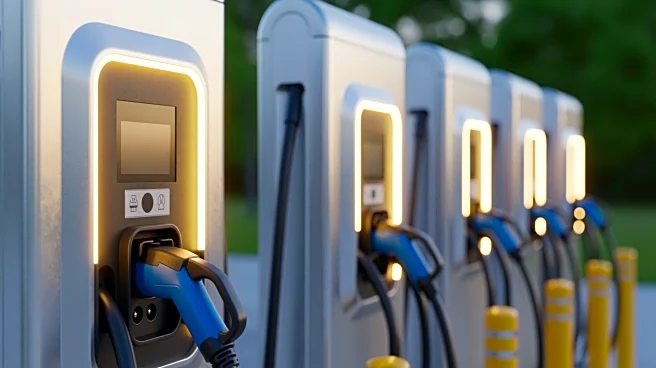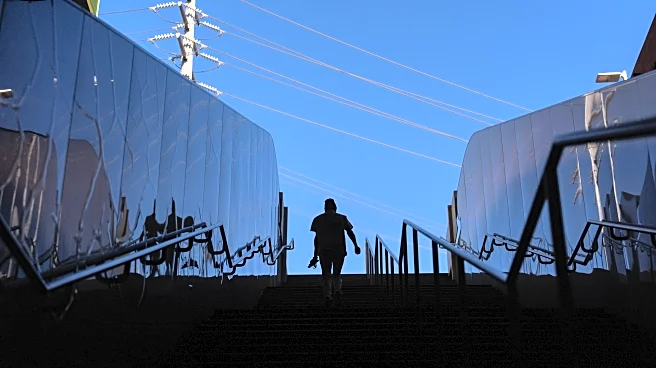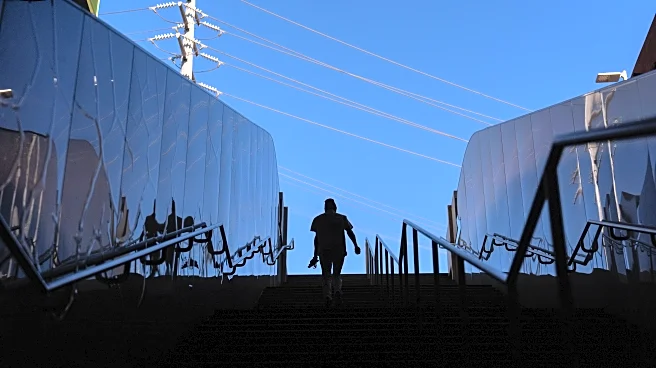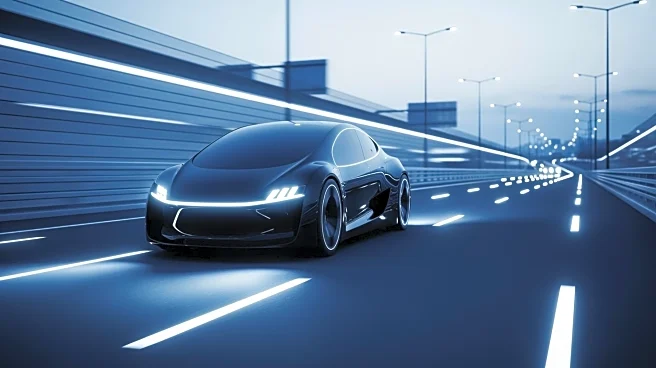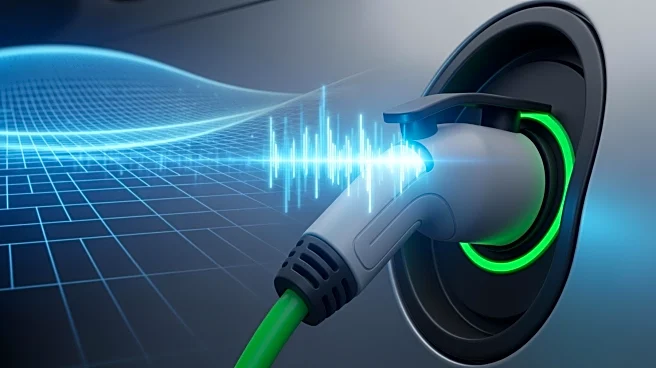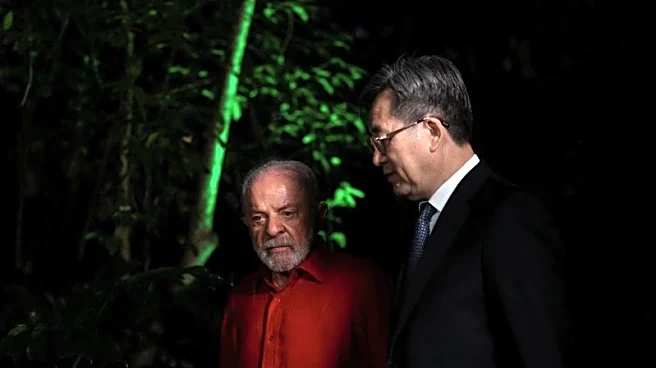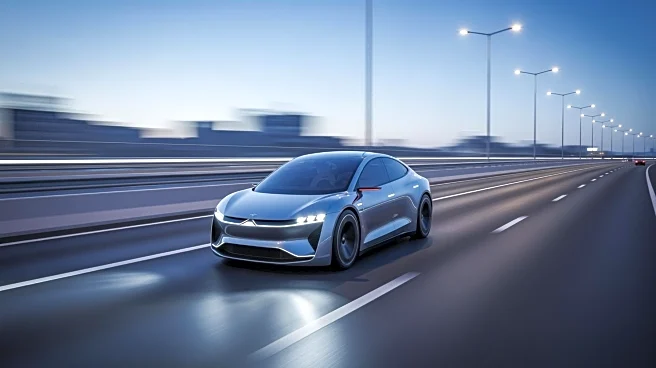What's Happening?
The City of Los Angeles Department of Transportation (LADOT) has announced a new initiative to install 90 public curbside electric vehicle (EV) chargers throughout the city. This project, undertaken by the electric vehicle curbside charging company 'it's
electric', aims to enhance the accessibility of EV charging infrastructure in urban areas. The chargers will be Level 2 and available 24/7, catering to EV owners who do not have access to private charging facilities, such as those living in apartments or condos. The first installations are set to occur in Koreatown, with locations including 473 West 1st Street, 625 South Harvard Blvd, and 615 South Virgil Ave. This move is part of Los Angeles' broader strategy to expand its public charging network, supporting the state's goals for EV adoption and addressing the city's significant air pollution issues.
Why It's Important?
The installation of these new EV chargers is crucial for several reasons. Firstly, it supports the growing adoption of electric vehicles by providing necessary infrastructure, which is a key factor in encouraging more residents to switch from internal combustion engine vehicles to electric ones. This transition is vital for reducing air pollution, a significant health concern in Los Angeles, where particulate matter and ozone levels are high. The California Air Resources Board has linked particulate pollution to over 9,000 deaths annually in the state. By increasing the availability of EV chargers, Los Angeles is taking a proactive step towards improving air quality and public health. Additionally, this initiative aligns with California's environmental goals and could serve as a model for other cities aiming to expand their EV infrastructure.
What's Next?
The project is expected to be completed within the next year, with ongoing installations throughout Los Angeles. As the chargers become operational, LADOT and 'it's electric' will likely monitor usage patterns and gather data to assess the impact on EV adoption rates and air quality improvements. This data could inform future expansions of the charging network and adjustments to the city's environmental policies. Stakeholders, including local government officials, environmental groups, and residents, will be watching closely to see how this initiative affects air pollution levels and public health outcomes. The success of this project could lead to further investments in EV infrastructure across California and potentially influence national policies on electric vehicle adoption.
Beyond the Headlines
Beyond the immediate benefits of reducing air pollution, the installation of EV chargers in Los Angeles could have broader implications for urban planning and transportation policy. As more cities recognize the need for sustainable transportation solutions, the integration of EV infrastructure into city planning could become standard practice. This shift may also drive innovation in related sectors, such as renewable energy and smart grid technology, as cities seek to support the increased demand for electricity from EVs. Furthermore, the initiative highlights the importance of public-private partnerships in achieving environmental goals, demonstrating how collaboration between government agencies and private companies can lead to effective solutions for complex urban challenges.
